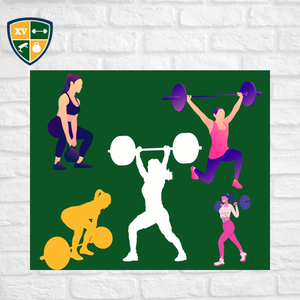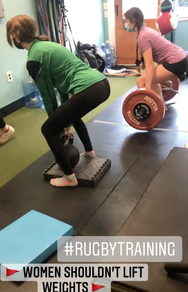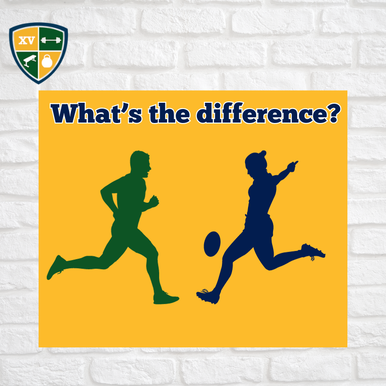|
Today, I have bone to pick with some folks out there, I’m talking to you dudes who don’t like to let anyone not in your clan in to the weight room. This has got to change, now. I have had the pleasure of coaching some of the most badass, hardworking female athletes and they still get uncomfortable because guy’s can’t control themselves or at least act in a welcoming manner. I had two distance (online programming) athletes tell me about uncomfortable situations at the gym. 1) Had just the awkwardness of many boys being Bros, we know what it means and giving off the vibe that nobody but their kind is allowed to lift on the deadlift platforms. 2) Another had the very uncomfortable event of being the only female in the gym that wanted to use the trap bar and the guys seemingly pressuring her to hurry up with it by constantly staring at her. When dude’s wonder why there are women only gyms or women only areas of gym, THIS is why. I have had some athletes be able to defy this and tell the boys to shove it. With that they created themselves a space of comfort so they could do their lifts with no issue, but not every one of them finds success like this. I think I do a pretty damn good job making sure that female's that want to pick up heavy shit with me feel like 250 Cypress street is a safe space. Naturally, I'm annoyed that it's so easily undone once they leave my gym and use other facilities. To counter this, let's lay down some easy rules that can make a female feel more welcomed in the gym, the heavy weights area especially;
-Ask if they need the bar or platform. Might be all it takes for them to get after it. -Wait your damn turn if someone you want to use is in use, you wouldn’t want someone vulturing around you for a piece of equipment, imagine this being 10x more uncomfortable for a woman. -Don’t stare, this should not require reminder or explanation. -Lastly, keep your conversations appropriate for public. Little boys tend to talk about little things too often in the public sphere and when a female can here a conversation like this, even if it’s somewhat tame, it gets uncomfortable very quickly. In the end, SHARE because the more people picking up heavy shit, especially at younger ages, the better off the world is, promise. Thanks for reading friends have a great day!
0 Comments
Nearly every coach trains two different populations, and many ask, what’s the difference between programming for gen pop and a competitive athlete? In my experience I’ve trained both people that would be categorized as general population (gen pop) and people that would be categorized as competitive athletes (athletes). To some, or perhaps minimal shock, there is not that much of difference in training the two. The nuts and bolts are primarily the same, both need to squat, hinge, push, pull, carry, and do some unilateral movement. Both need to train movements in all 3 planes, and both need to develop power. The differences are subtle, but here are 3 that I can see.
Load management- Athletes tend to have a (or several) very obvious time of the year when they are under heavy stress and workload. Since the odds are the sport coach is not going to manage their stress loads, it’s up to the S&C coaches to control their training volume and intensity so they don’t get run down and/or hurt. For gen pop, load management also needs to be considered in times of high stress too. The difference in this case is those times of the year tend to be a little more random, not completely, but certainly less predictable than a sports season’s schedule. Bulletproofing- For me, programming with an athlete always includes a direct attempt to target some of the more often injured areas of an athlete in general, muscles such as hamstring, calf and adductors being the 3 I focus on the most. With gen pop, it’s less of a focus on certain areas and trying to cover all bases until something more acute rears its ugly head. Like it or not, as hard as we try, life tends to bring these about, so we deal with them as they come along. Conditioning/Cardio- With athlete’s the conditioning is tailored to their sport of choice. Whether they want to focus on conditioning for 1 particular sport that’s their “main” sport or just try to adapt to whatever sport is around the corner. Work and rest ration, rounds, working on full tank versus working on empty, all of it factors in. For gen pop folks, you can usually be a little freer, mix and match, whatever feels good type of stuff. Still need to get the heart and lungs pumping, give rest and progress with some thought, but it doesn’t need to be too detailed. While the some folks may not identify as a competitive athlete, there’s nothing wrong with a parent wanting to train like an athlete so they can always keep up with their kids or business person trying training like one so they can keep up with the go go go that comes with their job. It’s just the little subtleties that are different in the programming, for those folks and a competitive athlete. Thanks for stopping by and reading friends, have yourself a weekend and I'll be back soon with more goods. When anyone is starting with strength training, the main thing I’m looking for to see if a movement is mastered is control. What I mean by that is, when they squat are they just bouncing up & down aimlessly, just hoping to hit depth or are the clearly in control of the weight going down and hitting depth, then coming back up smoothly with intent. Then these folks wonder why I give them a tempo to follow...oops. Tempo= Prescribed timing for how long it take to reach the end of the movement, pause there if any and how long it should take to return to the start position of the movement To simply put why I don’t want this, if you are not controlling the weight, then the weight is controlling you or will control you at some point. When you’re out of control doing the lifts, you can’t focus on keeping things tight or fixing the little technique flaws that pop up in your lifts. Eventually the weight gets too heavy for one of these technique flaws to remain hidden and bang you’re hurt. Once I see trainees have sound technique and are in clear control of the weight, we can talk about doing things for speed or being sure that the weight moves quickly to the top of a lift. Less time worrying about injury and more productivity towards desired goals, makes sense right?
So next time you want to deliberately bounce the weight off the floor during deadlifts or bounce in and out of a squat for no rhyme or reason, consider whether you have control of the weight or the weight is controlling you. Thanks for hanging out and reading folks. See back here next week. |
Details
AuthorJarrod Dyke, CSCS Archives
December 2023
Categories |




 RSS Feed
RSS Feed